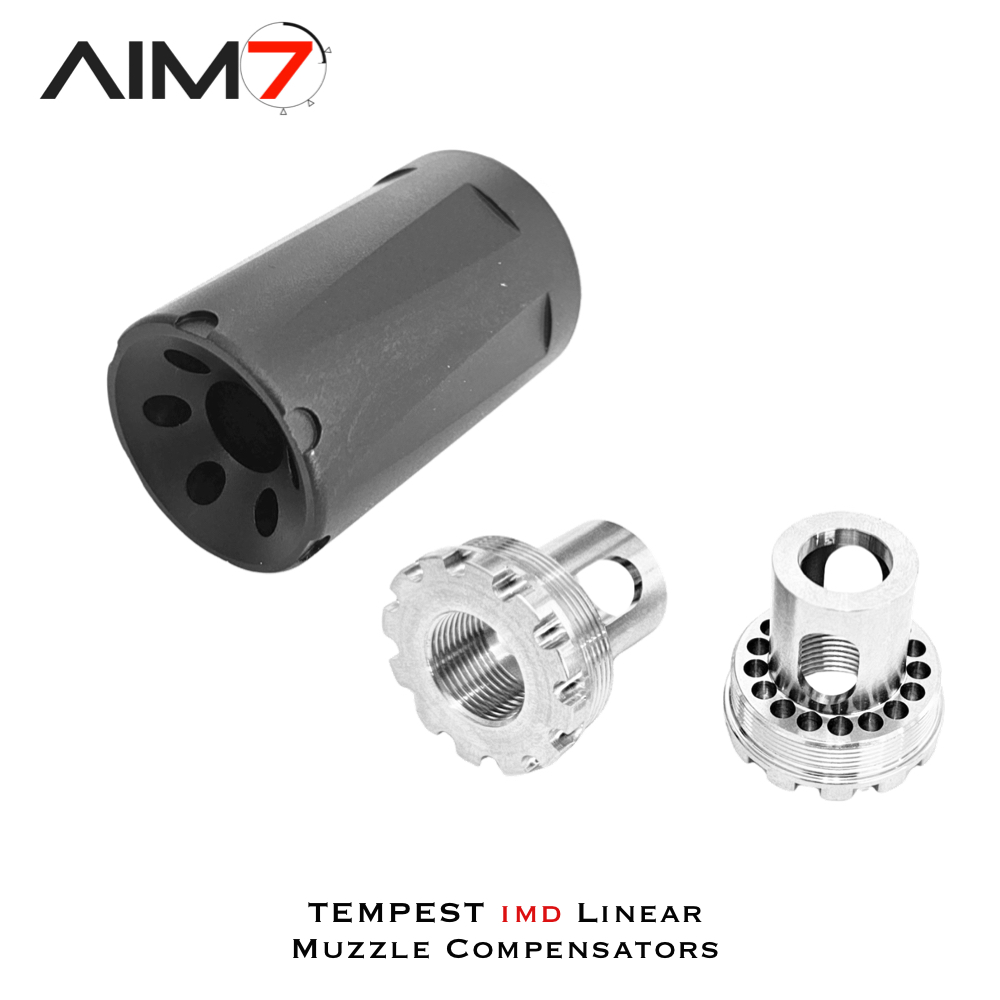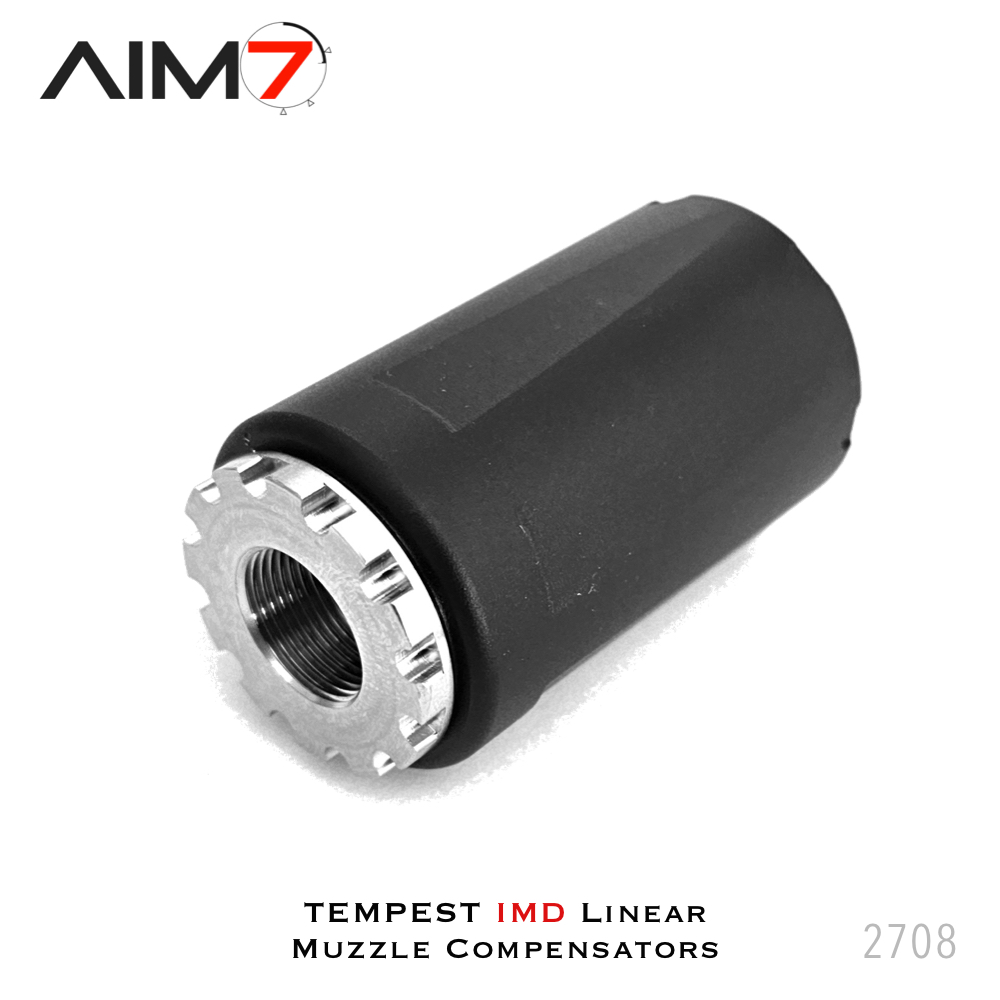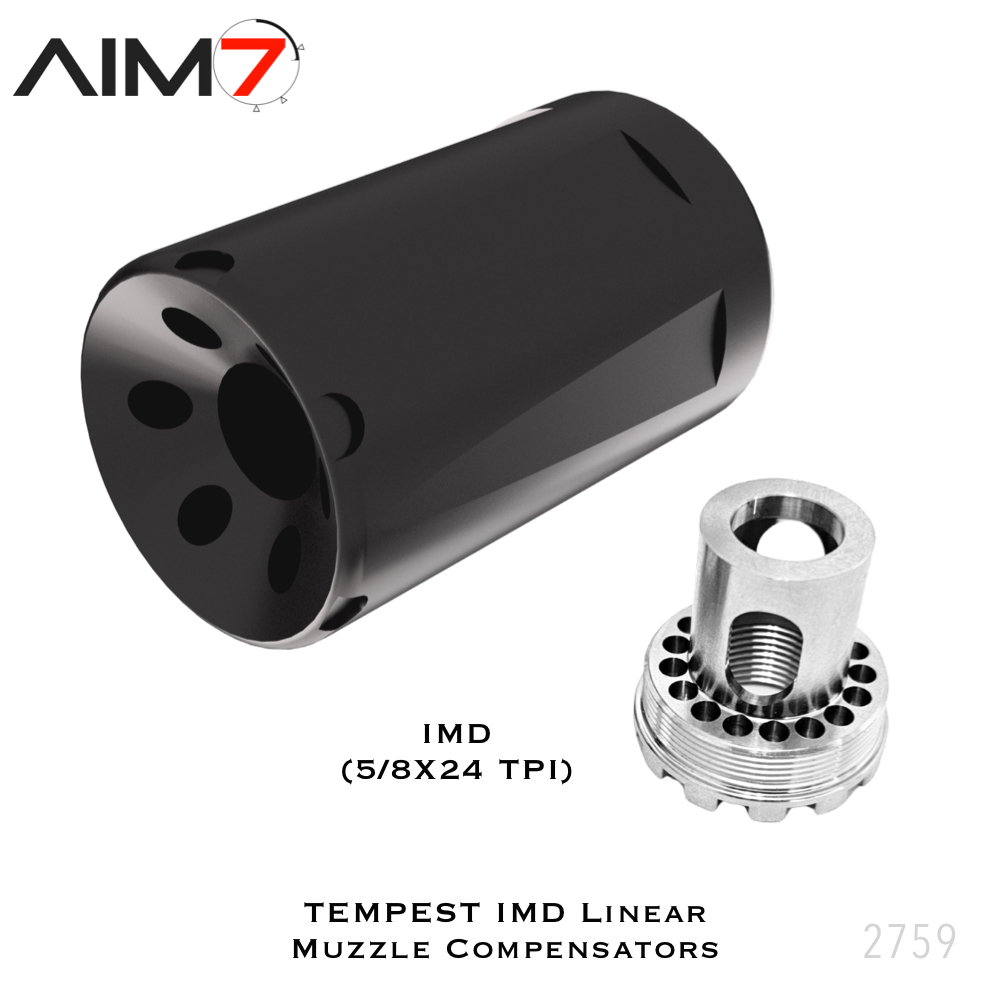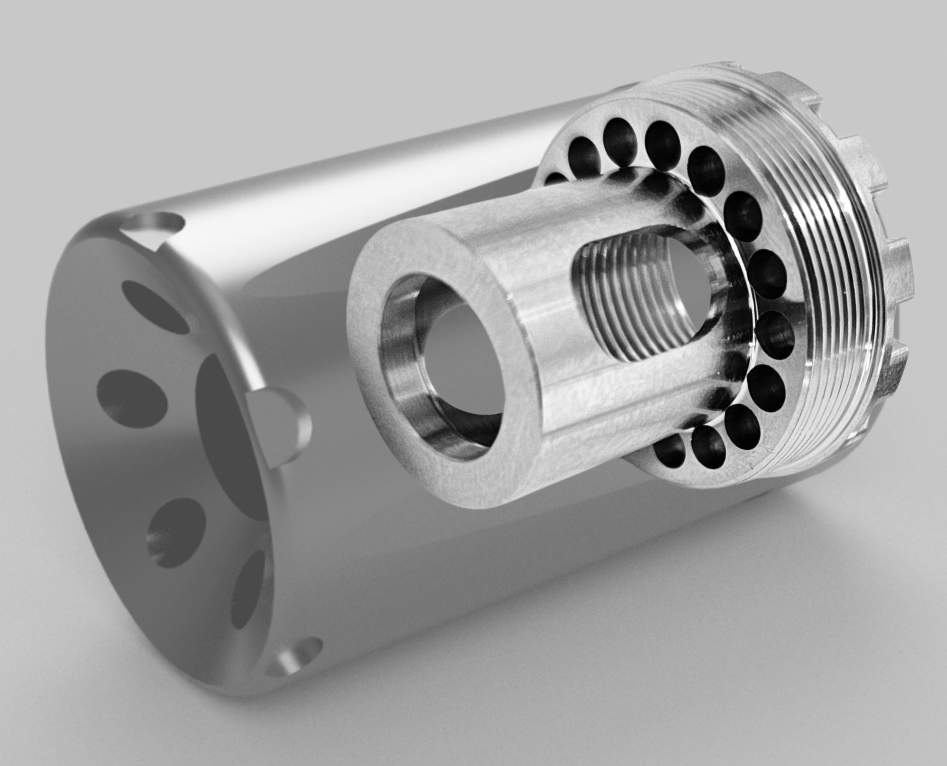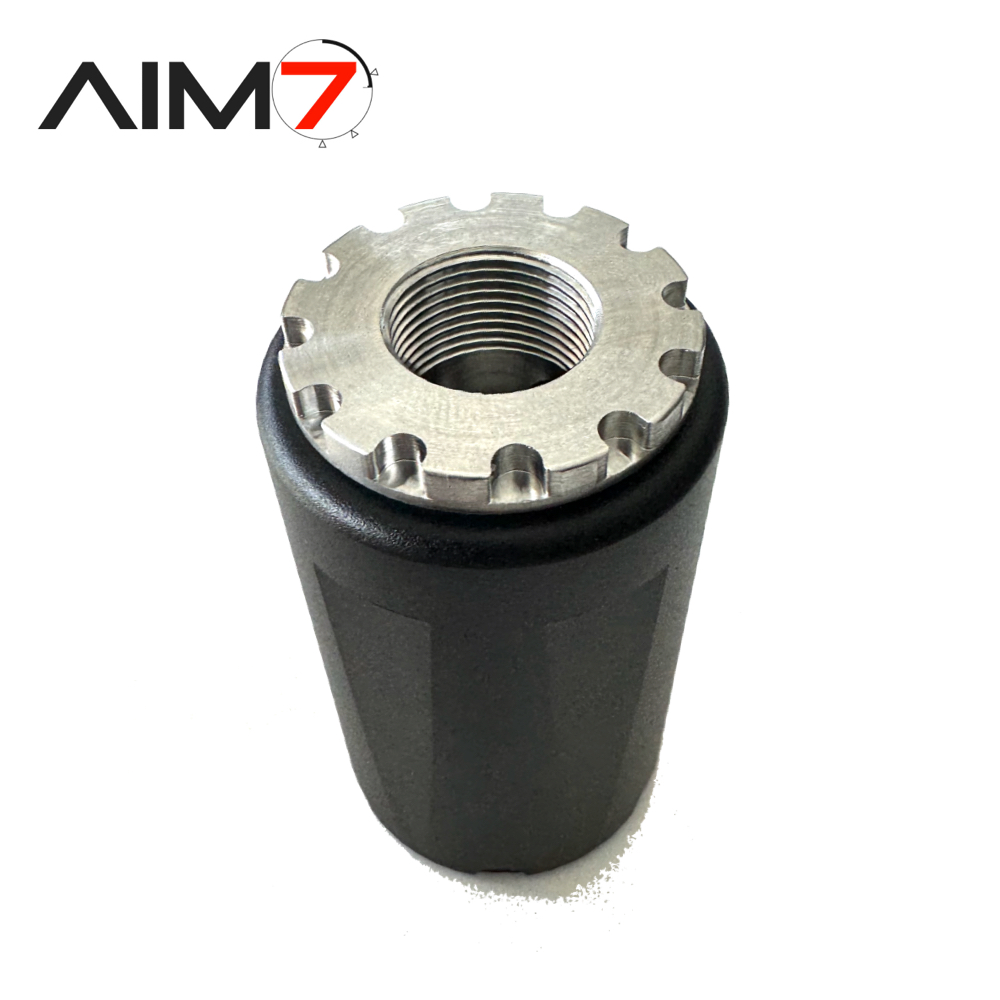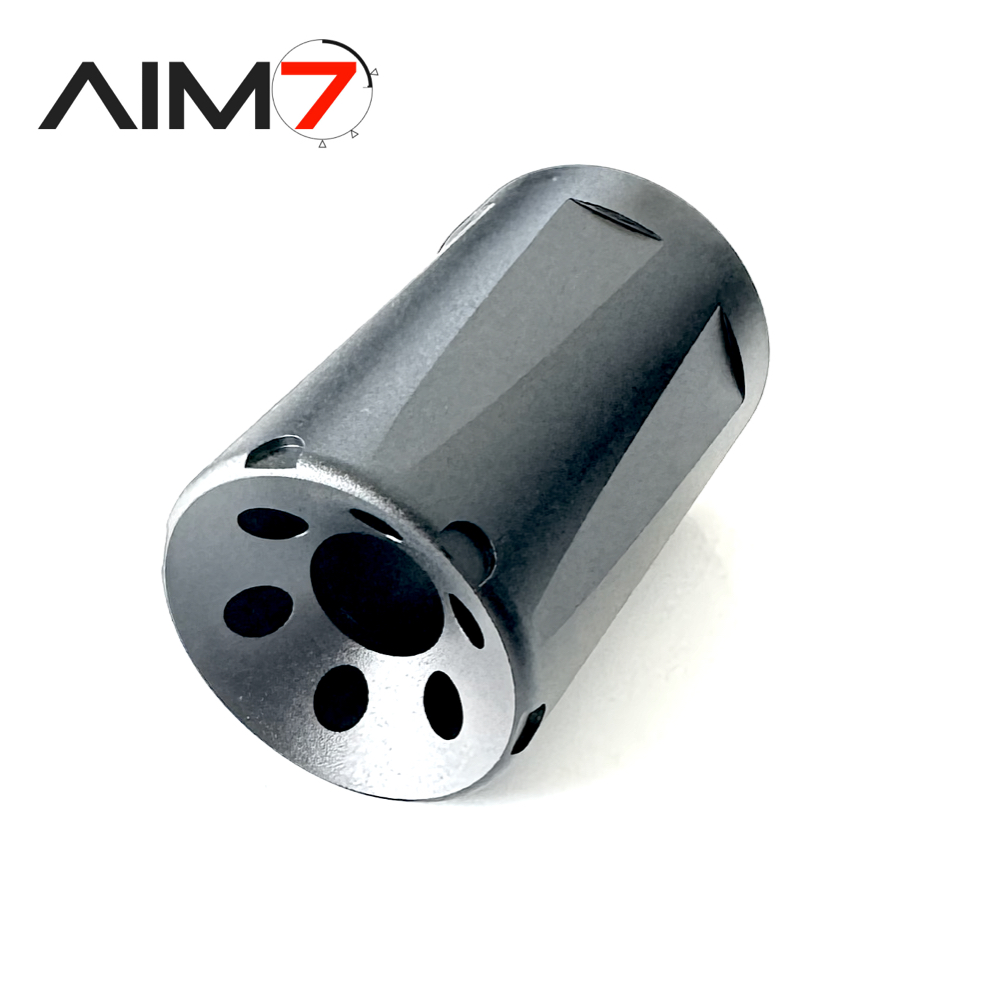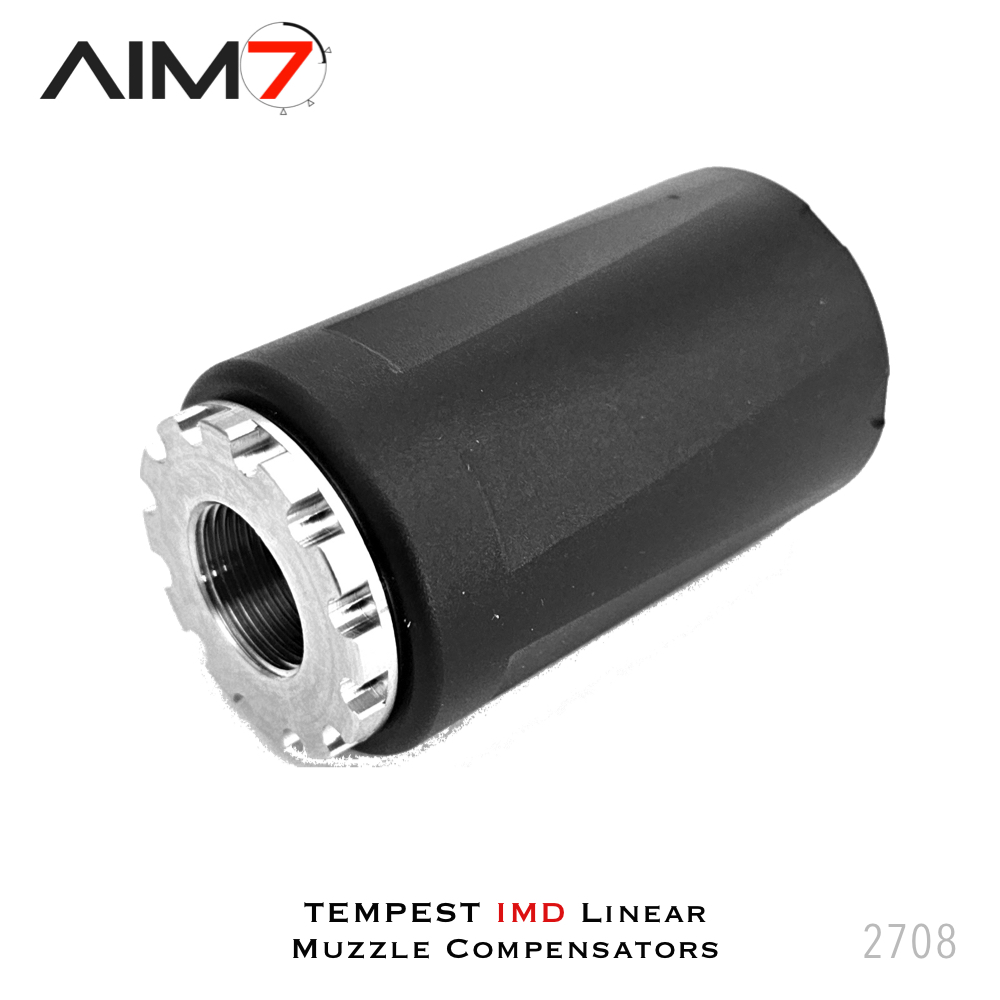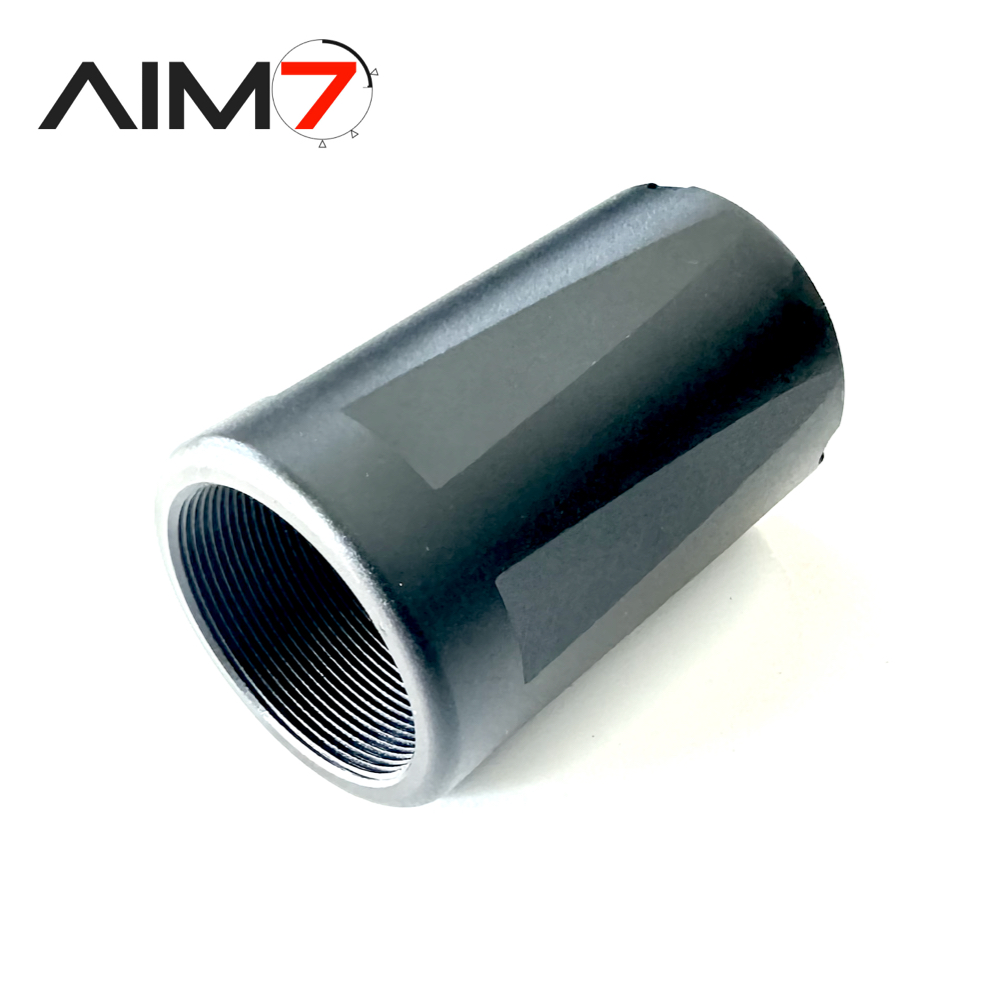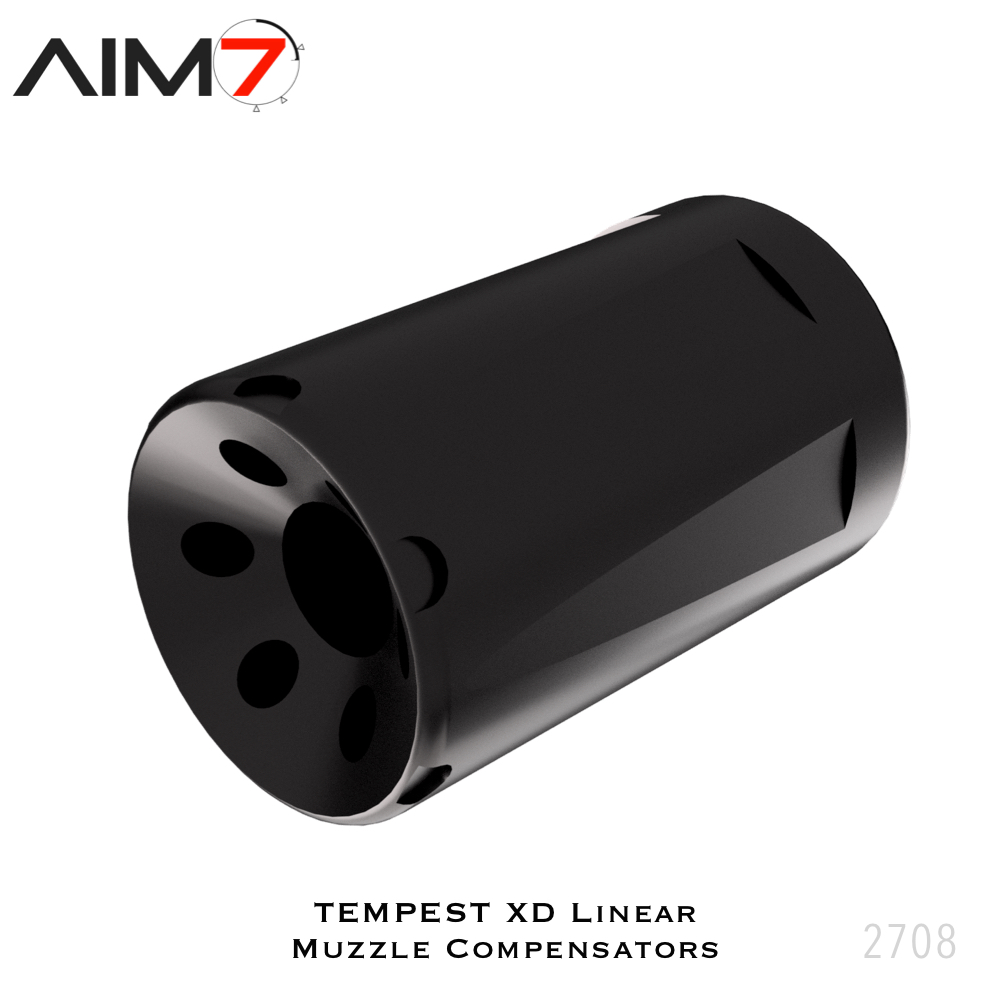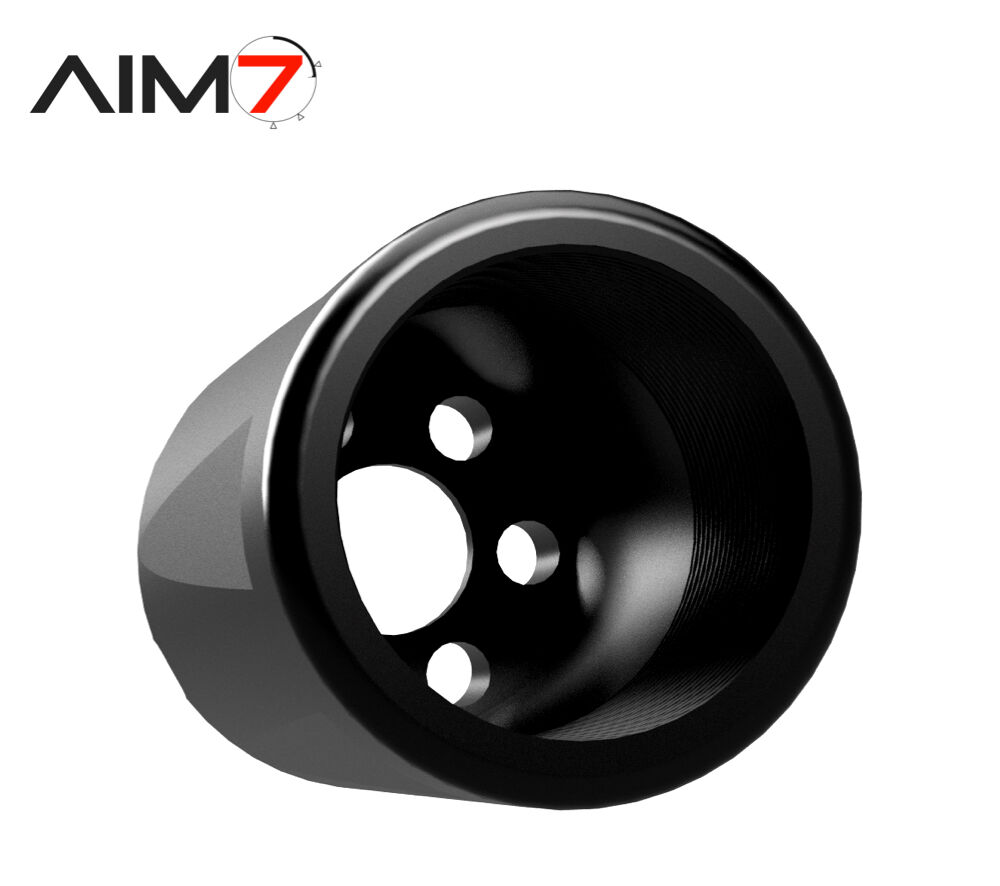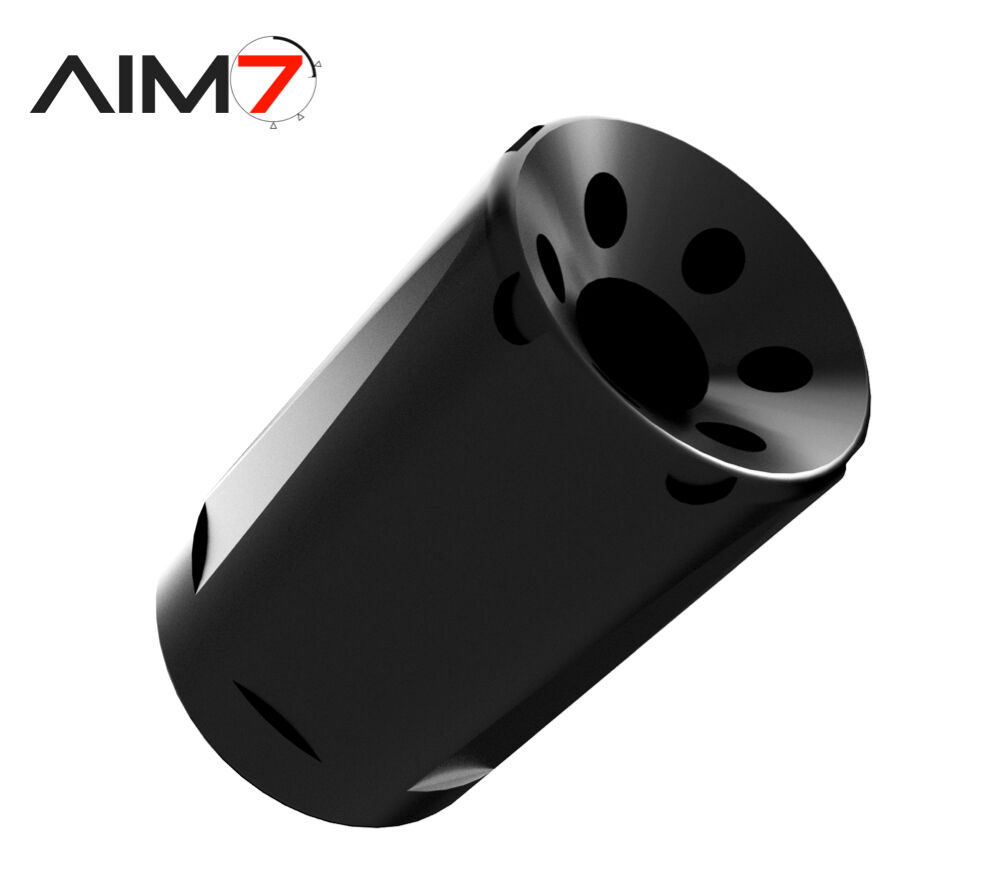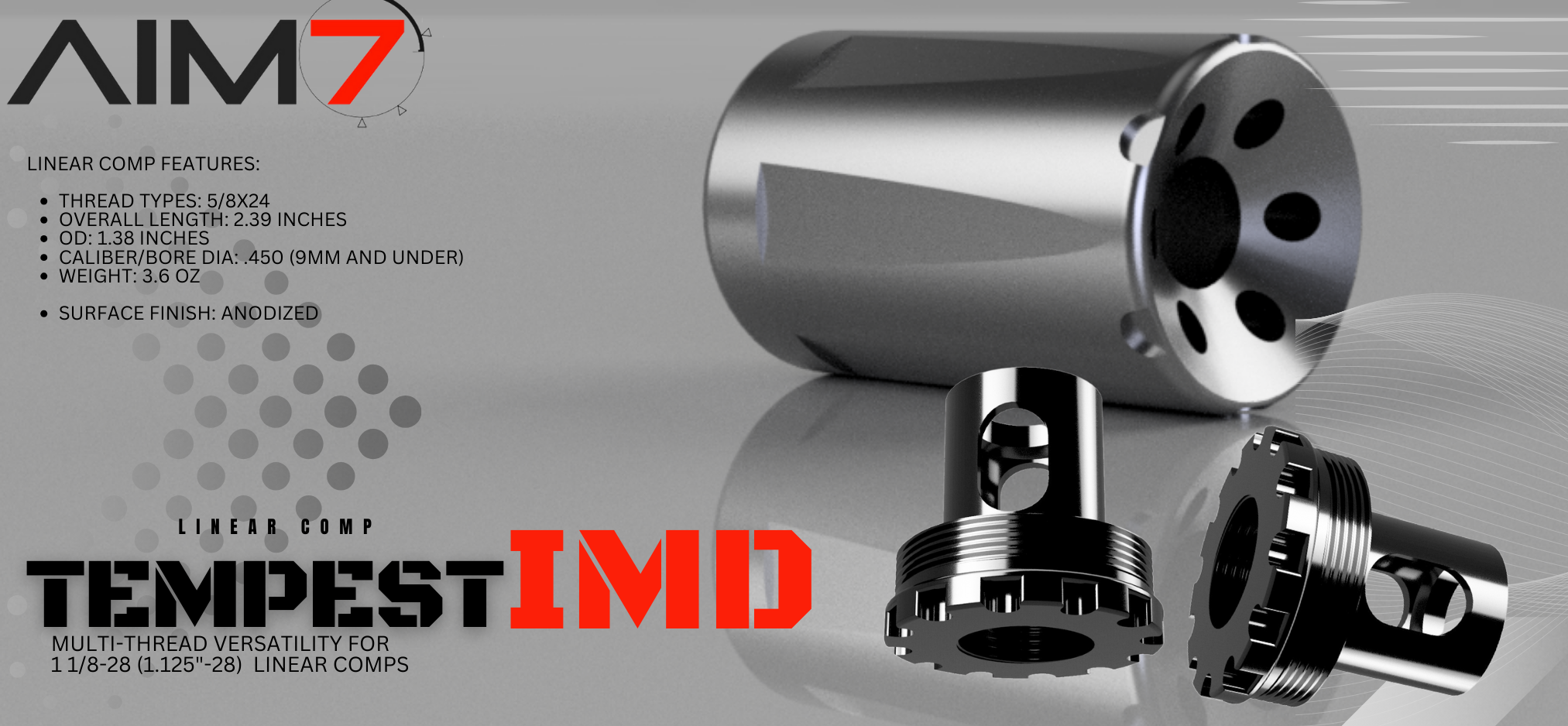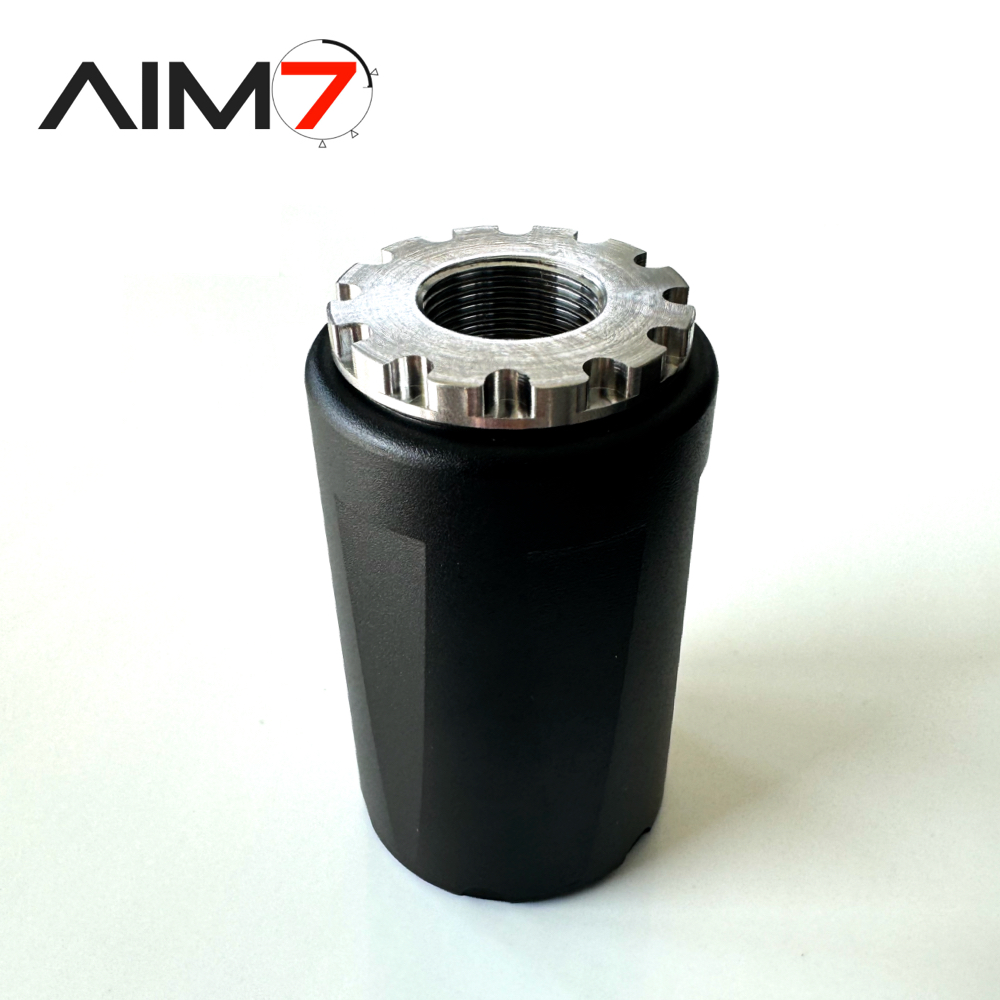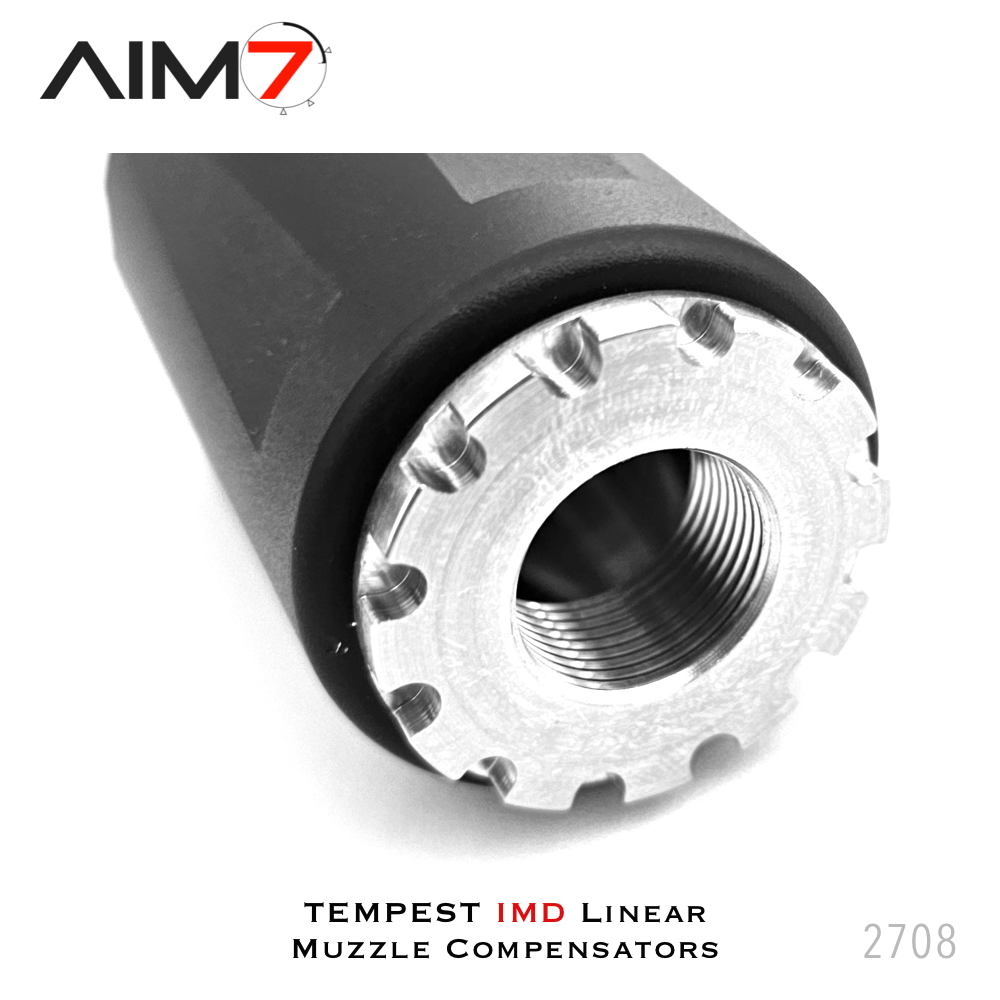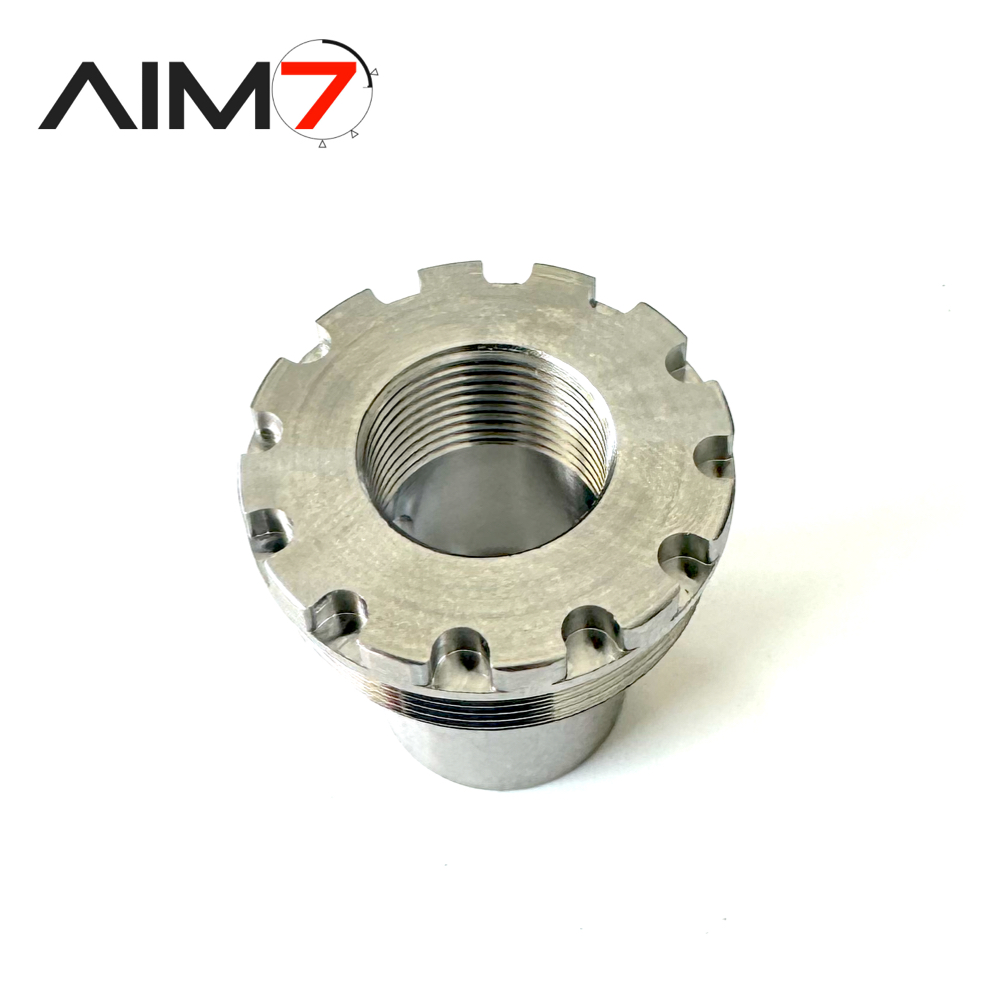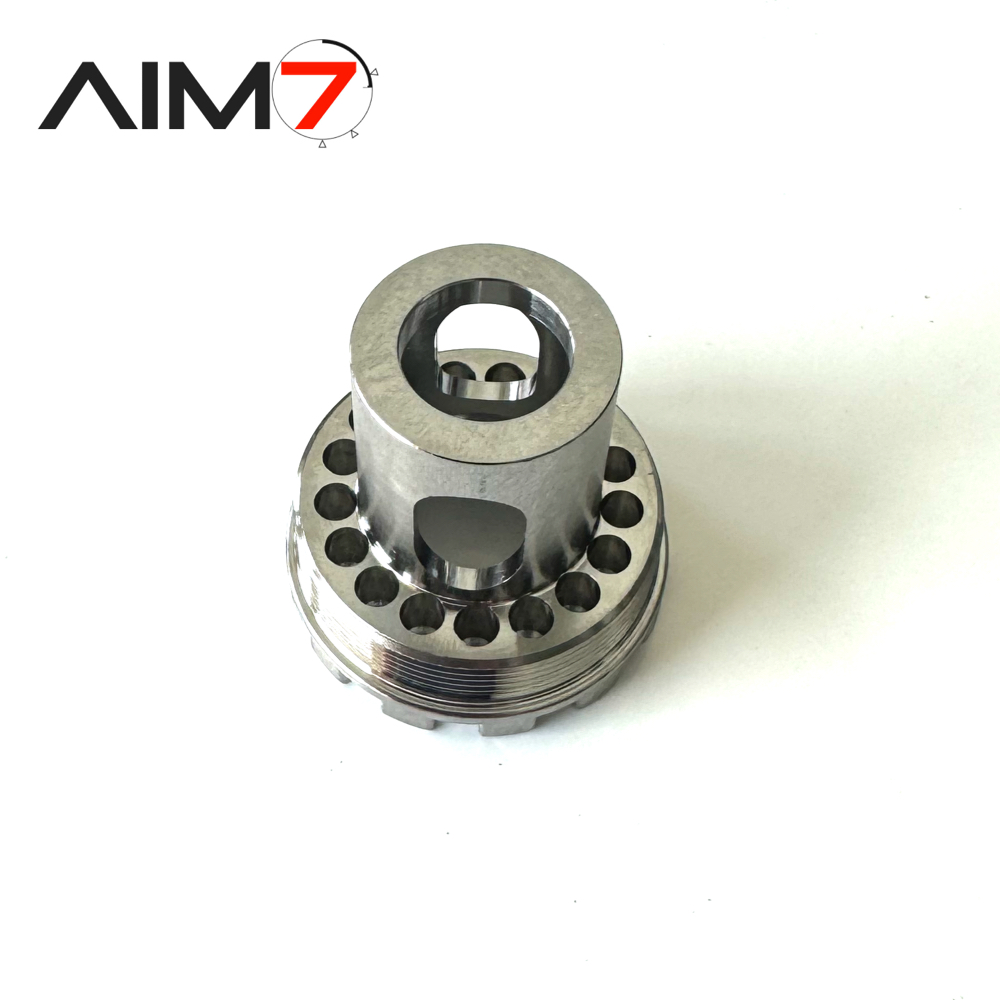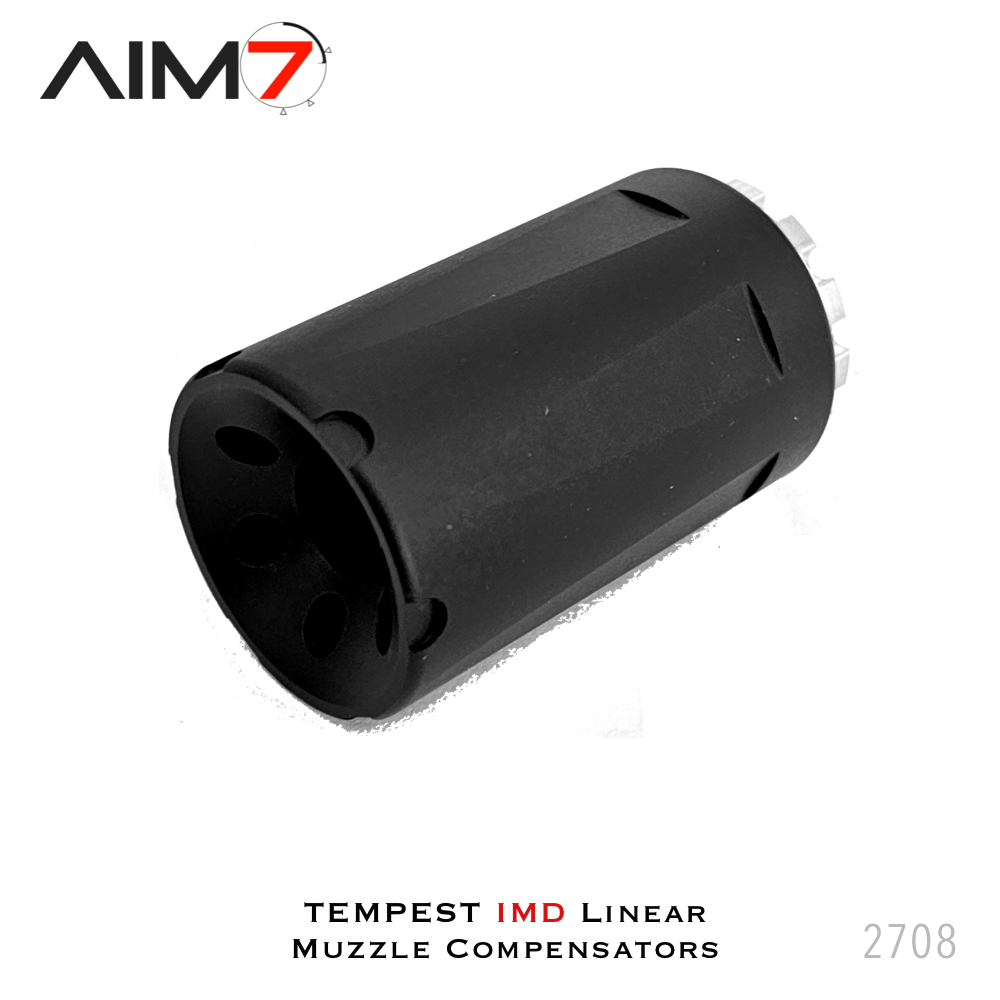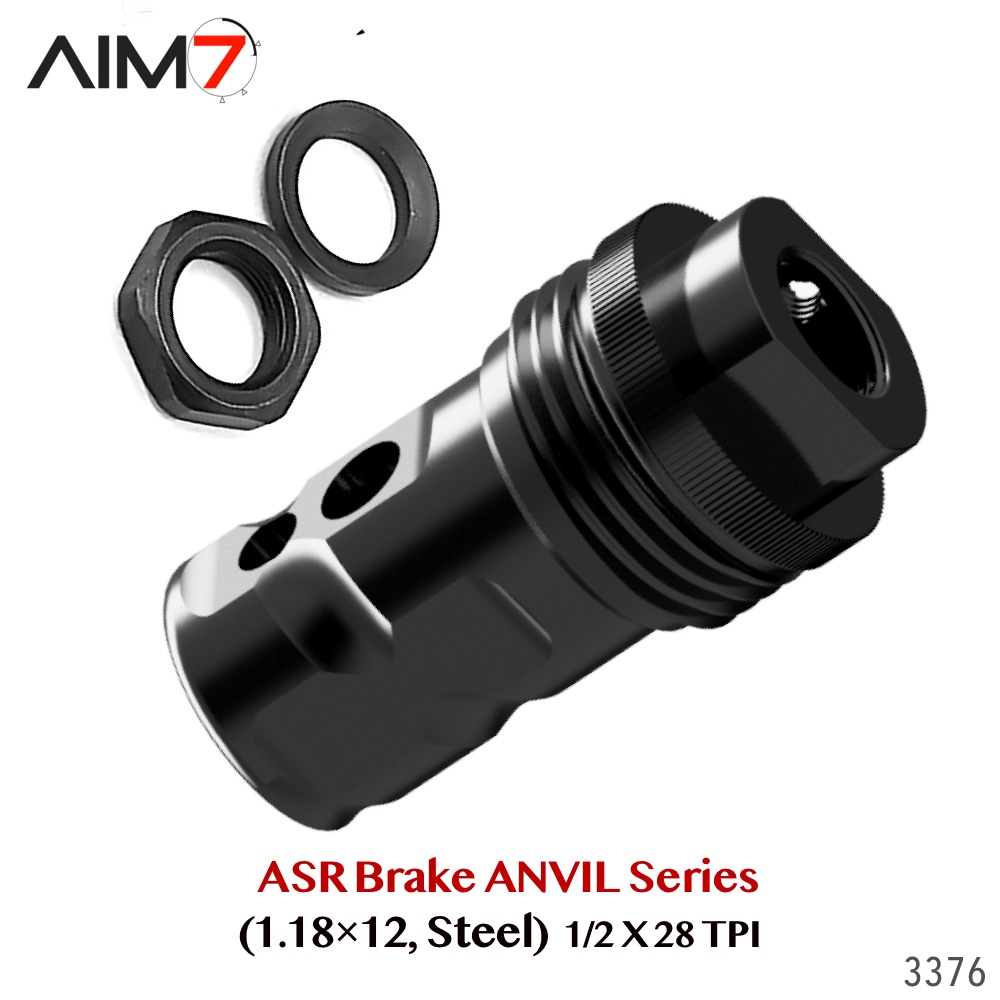AIM7 TEMPEST IMD Linear Muzzle Compensators 5/8X24 Combo
Features of the AIM7 Linear Comp
- Thread Types: IMD Device 5/8×24 17-4 Stainless Steel
- Overall Length: 2.39 inches
- Outer Diameter: 1.38 inches
- Caliber: Varies based on barrel thread
- Weight: 3.6 oz
- 6061 Aluminum
- Surface Finish: Black anodized
Description
AIM7 TEMPEST IMD Linear Muzzle Compensators 5/8X24 TPI
Integral Muzzle Device (IMD)
Thread Mount 1.125×28 ALPHA FOR 5/8X24 30CAL BARREL
Package Includes:
- 1 x IMD Device 5/8×24 TPI (30Cal) 17-4 Stainless Steel
- 1 x Tempest Comp
Linear compensators are part of a specialized family of muzzle devices designed to reduce muzzle concussions. The AIM7 linear comp is a prime example, efficiently collecting and redirecting muzzle gases away from the shooter. This forward redirection significantly reduces the perceived noise levels at the shooter’s ear, resulting in a softer shooting experience. Additionally, by pushing excessive noise and concussion downrange, bystanders also benefit from reduced exposure to muzzle gases.
Aim7 linear compensators have been successfully applied across various shooting disciplines, including:
- Close Quarters Combat (CQC)
- Competitive Shooting
- Varmint Hunting
- Law Enforcement
- Indoor Ranges
Installation
- No Crush Washer Needed: Installation is straightforward without the need for a crush washer.
- Optional Indexing: If indexing of wrench flats is desired, a crush washer or other timing device can be used.
Features of the AIM7 Linear Comp
- Thread Types: IMD Device 5/8×24 17-4 Stainless Steel
- Overall Length: 2.39 inches
- Outer Diameter: 1.38 inches
- Caliber: Varies based on barrel thread
- Weight: 3.6 oz
- 6061 Aluminum
- Surface Finish: Black anodized
What is a Linear Compensator?
A linear compensator, also known as a linear comp, is a device attached to the muzzle of a firearm that redirects the gases expelled when a bullet is fired. Unlike traditional muzzle brakes or compensators that direct gases to the sides or upwards to reduce recoil and muzzle rise, a linear compensator directs the gases forward. This design offers several benefits:
Benefits of Linear Compensators
- Reduced Recoil: By directing gases forward, linear compensators help mitigate the backward force felt by the shooter, making the firearm more comfortable to shoot.
- Muzzle Rise Control: While not as effective as traditional compensators in reducing muzzle rise, linear comps still help maintain better control over the firearm during rapid fire.
- Reduced Side Blast: Traditional muzzle brakes can produce a significant side blast, which can be unpleasant for the shooter and those nearby. Linear compensators minimize this side blast by pushing the gases forward.
- Enhanced Sound Forwarding: The forward direction of gases also helps project the sound away from the shooter, reducing perceived noise and pressure.
Applications of Linear Compensators
- Home Defense: In confined spaces, the reduced side blast is beneficial as it minimizes the risk of disorienting the shooter or bystanders.
- Tactical Shooting: For tactical operations, the forward-directed gases reduce the likelihood of disturbing teammates or giving away the shooter’s position with a side blast.
- Recreational Shooting: For sport shooters, the reduced recoil and more pleasant shooting experience enhance overall enjoyment.
What is a Linear Compensator?
A linear compensator, also known as a linear comp, is a device attached to the muzzle of a firearm that redirects the gases expelled when a bullet is fired. Unlike traditional muzzle brakes or compensators that direct gases to the sides or upwards to reduce recoil and muzzle rise, a linear compensator directs the gases forward. This design offers several benefits:
Benefits of Linear Compensators
- Reduced Recoil: By directing gases forward, linear compensators help mitigate the backward force felt by the shooter, making the firearm more comfortable to shoot.
- Muzzle Rise Control: While not as effective as traditional compensators in reducing muzzle rise, linear comps still help maintain better control over the firearm during rapid fire.
- Reduced Side Blast: Traditional muzzle brakes can produce a significant side blast, which can be unpleasant for the shooter and those nearby. Linear compensators minimize this side blast by pushing the gases forward.
- Enhanced Sound Forwarding: The forward direction of gases also helps project the sound away from the shooter, reducing perceived noise and pressure.
Applications of Linear Compensators
- Home Defense: In confined spaces, the reduced side blast is beneficial as it minimizes the risk of disorienting the shooter or bystanders.
- Tactical Shooting: For tactical operations, the forward-directed gases reduce the likelihood of disturbing teammates or giving away the shooter’s position with a side blast.
- Recreational Shooting: For sport shooters, the reduced recoil and more pleasant shooting experience enhance overall enjoyment.
integral Muzzle Device (IMD) Thread Mount 1.125×28 ALPHA FOR 5/8X24 30CAL BARREL
- Material: Made from 17-4 H900 stainless steel, a high-strength and corrosion-resistant material commonly used in firearm components.
- Function: Combines two functionalities:
- Integral brake: Reduces recoil and muzzle rise like a traditional muzzle brake, but machined directly into the mount, not a separate attachment.
- Direct thread mount: Allows for direct attachment of a suppressor (silencer) to the barrel without needing a separate adapter.
- Benefits:
- Blast baffle protection: The integral brake design extends beyond the threads, offering additional shielding for the suppressor’s first baffle, which faces the hot gasses.
- Pinning compatibility: The long “tail” provides a surface area for pinning and securing the mount permanently to the barrel (a legal requirement in some areas).
- Handguard clearance: The tail length ensures compatibility with handguards that might extend slightly beyond the barrel shoulder.
- Seamless aesthetics: The tail diameter matches a typical AR barrel for a cleaner look.
This product offers a single, compact unit that combines a muzzle brake, suppressor mount, and potentially a pinning surface for legal compliance.
Material: 17-4 H900 stainless steel
Overall length: 1.11″
Flange diameter: 1.15″
Weight: 3.3 ounces
External thread: 1.125×28 ALPHA (HUB)
Function:
- Integral muzzle brakes work just like traditional muzzle brakes. They utilize vents, ports, or baffles to redirect propellant gases exiting the barrel.
- This redirection helps to counter recoil and muzzle rise, allowing for faster follow-up shots and improved accuracy during rapid fire.
Benefits:
- Compactness: An integral brake eliminates the need for a separate attachment, resulting in a shorter overall firearm length while maintaining the benefits of a muzzle brake.
- Reduced weight: By eliminating a separate component, the overall weight of the firearm can be slightly reduced.
Aesthetics: Some shooters prefer the cleaner look of an integral brake compared to a separate attachment. - Legality: In some jurisdictions, there are minimum barrel length requirements. An integral brake that extends the barrel length can help a firearm meet these requirements.
Drawbacks:
- Limited options: With an integral brake, you’re stuck with the specific design machined into the barrel. You cannot swap it out for a different type of muzzle device.
- Modification difficulty: If the integral brake is damaged, it can be more difficult and expensive than a replaceable muzzle device.
Applications:
- Integral muzzle brakes are often found on hunting or competition rifles where shooters benefit from reduced recoil and faster follow-up shots.
- They can also be seen on some tactical rifles where compactness and maneuverability are important.
Here are some additional points to consider:
- Integral muzzle brakes can be louder than traditional brakes due to the design being fixed within the barrel.
- An integral brake’s effectiveness depends on the firearm’s specific design and caliber.
I hope this clarifies the concept of integral muzzle brakes for firearms.
Additional information
| Thread Pitch: | 1/2 x 28 TPI, 1/2 x 36 TPI, 5/8 x 24 TPI, 9/16X24, M13.5X1LH, M14X1LH |
|---|

